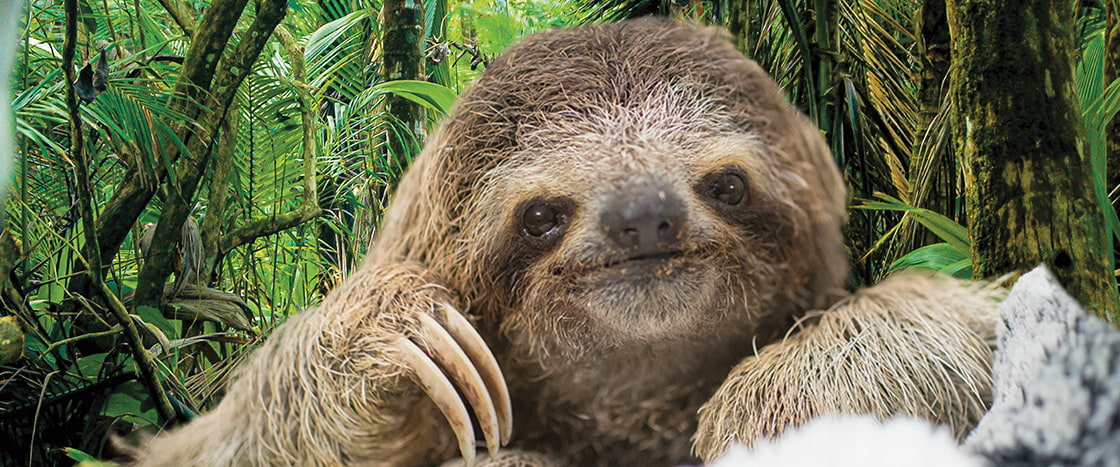Snow White lay still on the forest floor. The tiny sloth was ice-cold, her breathing weak.
All alone, she was dangerously close to death.
Only months before, Snow White had been healthy and happy, wrapped tightly around her mother’s furry chest in the treetops around Manuel Antonio, a national park in Costa Rica. Many sloths like Snow White and her mother make their home in the rainforest there. They live alongside thousands of other creatures.
As Snow White and her mother snuggled high in the leafy canopy, gold-colored monkeys leapt from tree to tree. Toucans with bright yellow and orange beaks perched in the branches. Spiny-backed iguanas the size of small dogs marched down below.
When Snow White was about 6 months old, she began to live on her own. She spent her days eating the leaves and fruit of a few trees that her mom had shown her were safe.
Then disaster struck.
Snow White’s home was near a hotel. At some point, a tree she depended on for food was likely cut down. Without enough to eat, Snow White began to starve. As she grew thinner and thinner, she became sick. Then a big storm lashed the area, chilling her to the bone. Too weak to hang on, she likely fell from her tree.
Would Snow White survive?
Snow White lay still on the forest floor. The tiny sloth was ice-cold. Her breathing was weak.
All alone, she was about to die.
Only months before, Snow White had been healthy and happy, holding onto her mother. They were in the trees around Manuel Antonio National Park in Costa Rica. Many sloths make their home in the rainforest there. They live alongside thousands of other animals.
Snow White and her mother snuggled in the leafy canopy. Meanwhile, gold-colored monkeys jumped from tree to tree. Toucans with colorful beaks perched in the branches. Iguanas the size of small dogs marched down below.
When Snow White was about 6 months old, she began to live on her own. She spent her days eating the leaves and fruit of a few trees.
Then disaster struck.
Snow White lived near a hotel. At some point, a tree she needed for food was likely cut down. Snow White began to starve. She grew thinner and thinner. She became sick. Then a big storm hit the area. Too weak to hang on, she likely fell from her tree.
Would Snow White survive?

